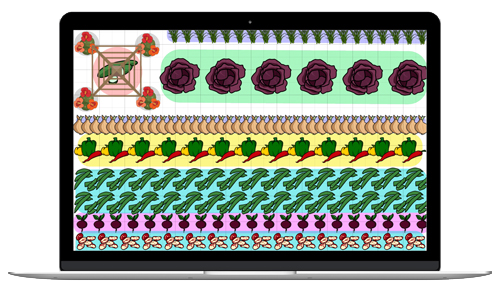
When to Harvest (and Eat!) Watermelon
The Almanac Garden Planner - Use It Free for 7 Days!
Plan your 2025 garden with our award-winning Garden Planner.
ADVERTISEMENT
I know some people have told me in crazy, but I try to use what my grandmother taught me. Broom straw. Get a piece of broom straw that is as straight and possible and find a pet well rounded spot on your melon, lay the piece of straw on that spot and gently let it go. If your melon is ripe the straw will actually spin, it may not spin like a helicopter blade but it will turn on its own. I have only ever tried this in the grocery store to check melon's for ripeness but I'm sure it will work in the garden and well.
Years ago there was an article in "Organic Gardening" on how to tell ripeness. The tip that works for me is first make sure it is not shinny, next I feel around the melon for ridges. Any fruit that gets numerous seeds in a row will bulge where the seeds are after they are mature. Of course if it is seedless this might not work.
I used to grow watermelons commercially. I found that each variety has different 'signals' as to when it's ripe. The most common was the yellow belly. Some had the first small leaf on the vine closest to the attachment point dry up as an indicator. Others it was the curly tendril that dried up.
I most often used the sound when the melon was thumped to guide me. It's all in the tone and is very hard to teach to others. I tried with my brightest worker, but he never got the knack of it. When he picked the watermelons, I got complaints. So I went back to thumping and marking the ones to pull. Interestingly Desert King, a yellow meated melon, would have a tone all its own. Much lower and more dull than other melons. You had to learn the variety's own code.
Cantaloupes were easier for the workers to pick. The outside would lose its green cast and with very gentle pressure the melon would detach from the vine - called 'full slip'. What you see in the super markets these days are cantaloupes with a piece of the vine still attached. Don't even bother. They taste like cardboard. As a backup, smell the vine end of the melon. It will smell like cantaloupe.
Honeydew melons will be soft on the blossom end when pushed. The softer, the more ripe until it's overripe. Yellow skinned honeydews are easier to pick. They don't turn yellow until they are close to ripe.
Pressing the melon on top and listening to the inside crunch works quite well.
There is no substitute for the thump test. Once you've heard the sound of a ripe melon, it will forever be unmistakeable (unless you have a tin ear). I am a city boy gone seaside yankee and I had to learn many years ago incity markets how to pick a good melon or grandma would never forgive me. An old man at a farmers market showed me what to look for and I've never been wrong since. We eat watermelons like a main course around here and buy several a week during season.
My dad was a farmer, and he grew just about everything, he always said when the bottom of a melon is yellow, then its ripe. He didn't grow the sugar babies so not sure about them. Thank you, Susan Reynolds














